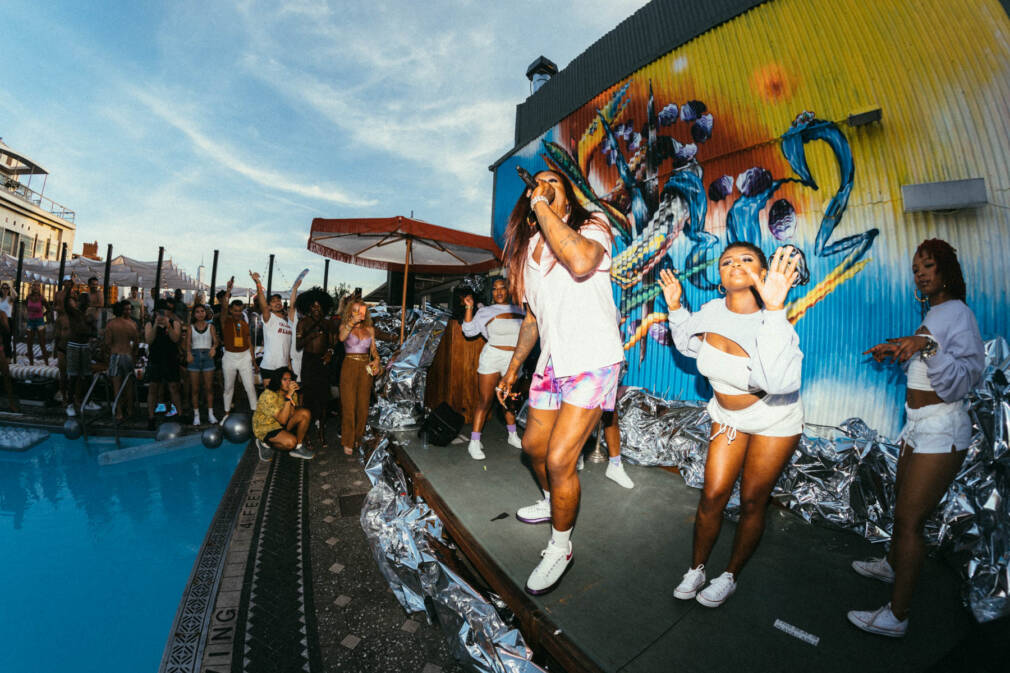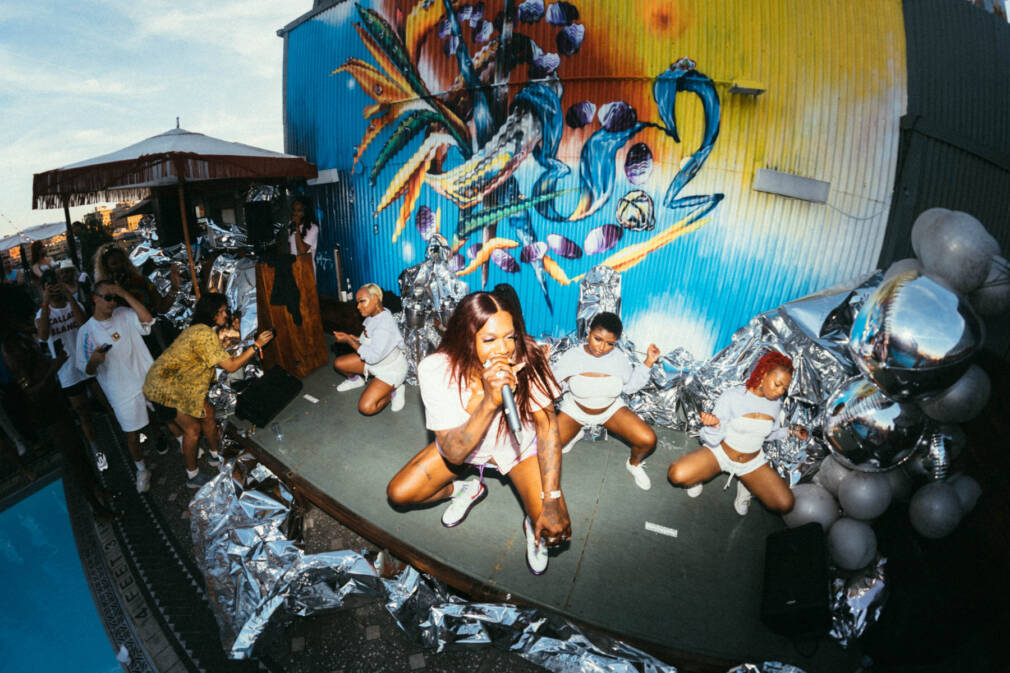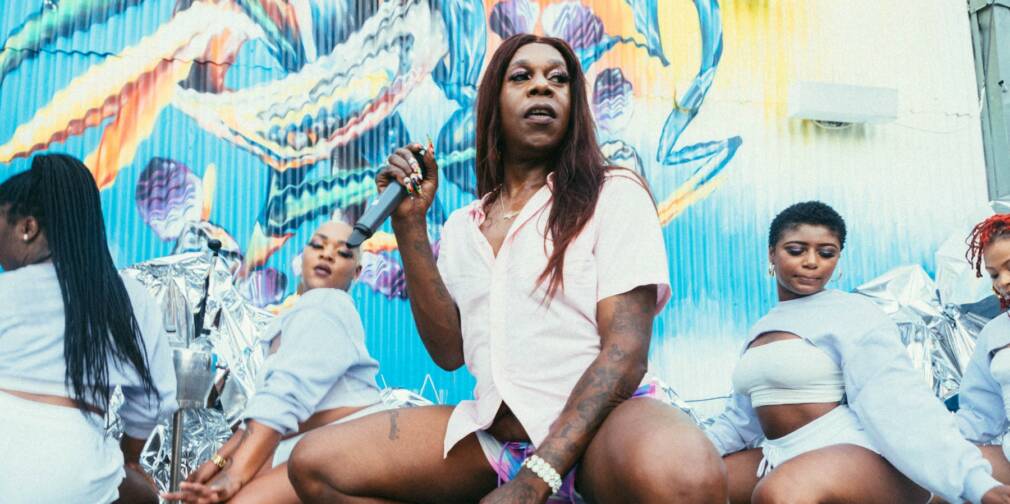Recalling the Pride pool party where his reportage of the “Queen of bounce” Big Freedia was shot – photographer Alexey Kim remembers: “Big Freedia’s performance was the party starter – Even though the party had been going on for hours before she took the stage!”
Big Freedia (pronounced Free-duh) is the Beyoncé of New Orleans bounce, the homegrown Southern hip-hop referenced by Queen Bey herself on her 2016 album Lemonade which features Freedia on “Formation.” Bounce is both party and political music, but what else is it? And where did it come from?
The story begins in 1986 with otherwise obscure New York rap duo Orville Hall and Phillip Price, known professionally as The Showboys – and their sleeper hit “Drag Rap” (Triggerman). Cut for Profile Records the track is constructed from a handful of samples from 50’s TV cop-show Dragnet, paired with brash 808 snares and a distinctive ascending and descending keyboard played in a xylophone pattern. It did little commercially and would have remained a novelty in New York (where hip-hop was enjoying it’s first golden age) had it not found its way South (and to this day no one quite knows how this happened) where it blew up.

A combination of the xylophone hook (known today as the “Triggerman Bells”) the drum break and the general strut of “Dragrap” resonated with DJ’s and clubbers in New Orleans where local producers quickly began deconstructing the track and assembling it into something new.
Around the same time the second mother sample for bounce was plucked from DJ Cameron Paul’s 1987 release “Brown Beats” – a 808 heavy West Coast disc the from which producers borrowed further elements they combined with “Dragrap” to create proto-bounce.
Samples from these two records therein became (and remain) the paradigm for the whole genre. What would make bounce distinctly New Orleans though was then added, namely call and response chants calling out dance steps, and shout-outs to the city’s various wards, and by 1993 when M.C.Tucker and DJ Irv released “Where dey at“ the formula was well and truly mixed with the addition of a liberal amount of cursing and sexualy explicit suggestions as to how one might move to this new music.
Indeed the definitive dance for bounce was codified in 1993 by DJ Jubilee on “Stop Pause (Do the jubilee all)” which features the exhortation “Twerk baby, twerk baby, twerk, twerk, twerk” a chorographical direction to hype up the crowd to perform the signature move.
A historically liberal city (jazz of course was born in the city’s red light district Storyville) New Orleans has never been shy of sex and sexuality and the importance of Mardi Gras with its permission to dress, behave and identify as one pleases also prefaces how bounce evolved as intersectional music and brings us to 1998 and the evolution of “Sissy bounce.”
The centring of LGBTQ artists in bounce dates back to 98’ when DJ Jubilee saw transgender rapper Katey Red performing at a block party and immediately signed her to his label Take Fo’ Records.
Following the release of her debut album Melpomene Block Party in 99′ Red would go on to trailblaze the way for a community of LGBTQ bounce artists including Sissy Nobby and Big Freedia (who originally performed as her backing dancer) and have today become icons of the genre.
The proliferation of bounce can also be attributed to the displacement of people from New Orleans following the Hurricane Katrina disaster of 2005. Abandoning their homes and their city, the community took their music with them into the clubs and on to the radio wherever they went. An outpouring of nationwide support for the flooded city manifested in an appreciation of the indomitable spirit of New Orleans as personified in bounce, further contributing to its rise in popularity.

However, this appreciation has been labeled appropriation by some, with the likes of Drake and Beyoncé sampling artists and channeling the attitude of the music without always providing greater visibility for the LGBTQ stars of the genre. Also problematic is the story of The Showboys themselves who say they made just $2,500 from “Triggerman“ and continue to see few, if any royalties.
What is beyond dispute though is the charisma and work ethic of artists like Freedia (who stars in her own award winning reality TV show). As photographer Alexey Kim says about the experience of shooting Freedia and her dancers: “Those girls work, and twerk, hard.”
Be very sure then that bounce is here to stay. As Big Freedia asserts on “Formation”: “I didn’t come to play with you hoes. I came to slay bitch.”




